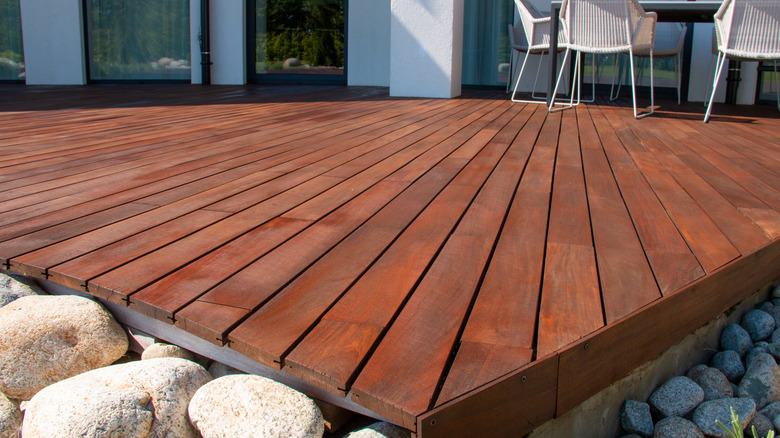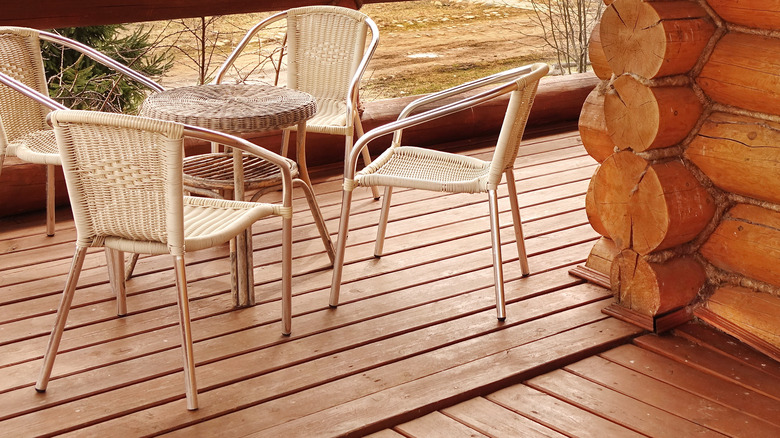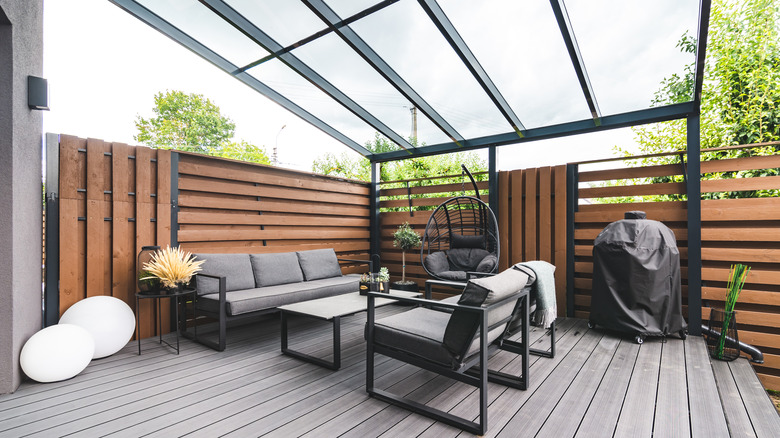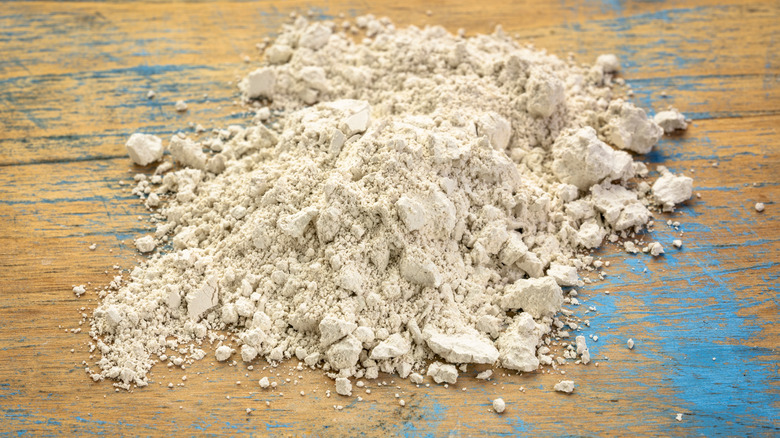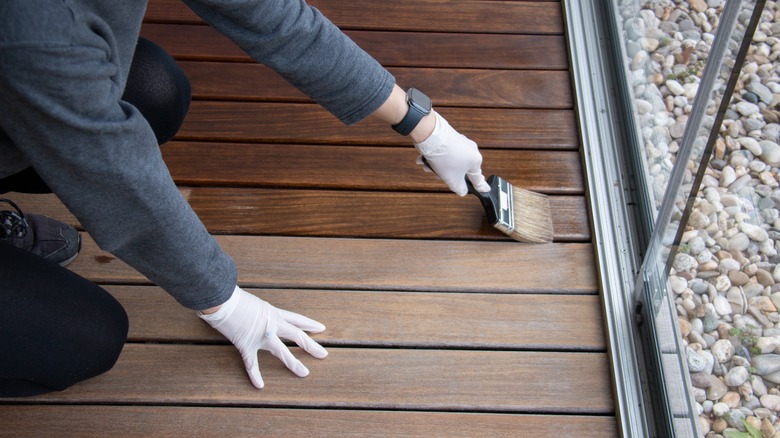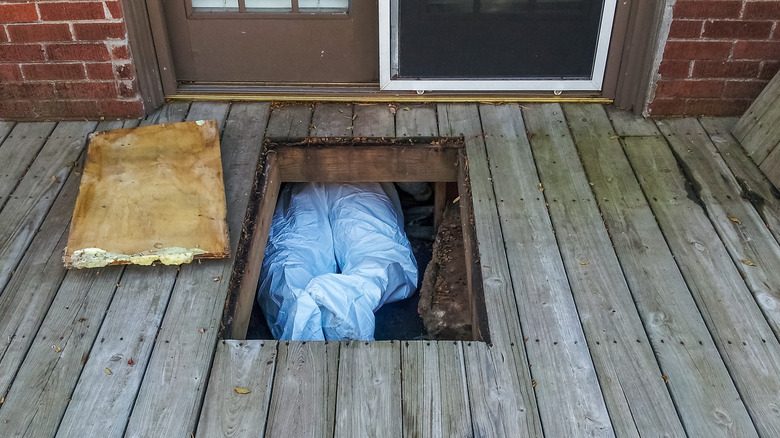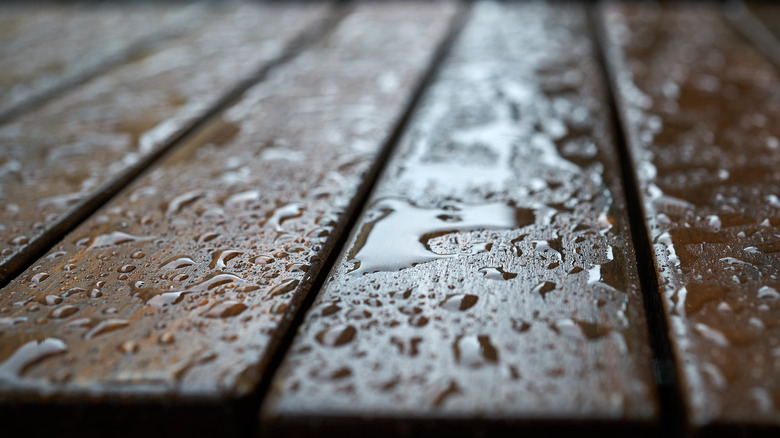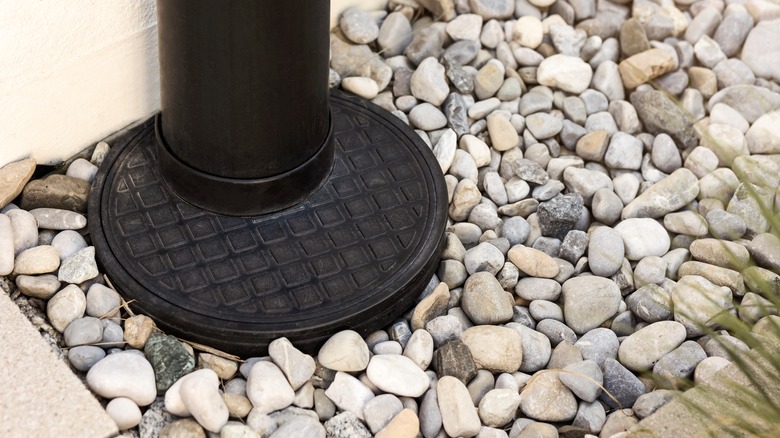The 9 Best Ways To Protect Your Deck From Destructive Termites
We may receive a commission on purchases made from links.
Protecting your deck from termites is akin to setting up a fortress against an invisible enemy. The battle is often nuanced, requiring a combination of proactive and reactive strategies. From the type of wood you choose to the maintenance routines you adopt, almost every aspect of your deck can influence its vulnerability to termites. The key to safeguarding your deck lies in understanding both the behavior of termites and the range of preventive measures at your disposal.
Termites, often called silent destroyers, have a notorious reputation for causing extensive damage to wooden structures. They primarily feed on cellulose, a component found abundantly in wood. This makes decks highly susceptible to termite attacks. However, termite infestation isn't just a concern for the wood itself; it also poses a significant threat to the safety and value of your property.
Implementing effective prevention, control, and elimination measures against termites is not just a one-time task, but a continuous process. It begins with the selection of materials for your deck. Choosing the right type of wood, ensuring adequate ventilation, and maintaining a dry environment are pivotal in deterring these pests. Beyond these important factors, regular inspections and maintenance play a crucial role.
Avoid soft wood
Termites have a notorious preference for softwoods like pine and spruce. These types of wood are not only easier for termites to chew through, but they also often contain a higher moisture content, making them an ideal target for these pests. But, it's not just softwoods that are at risk; even hardwoods such as oak and maple can fall prey to termites, especially if they are decayed, damp, or in direct contact with the soil. To effectively shield your deck, opting for termite-resistant wood is a wise strategy. Woods like cypress, redwood, and teak are less appealing to termites due to their natural oils and density, which make them more challenging for termites to penetrate. These woods also have the added benefit of being more durable and resistant to rot, offering a dual advantage.
While termite-resistant woods may come with a higher price tag, the investment is justified when considering the potential cost of termite damage repair, which can range from a few hundred dollars to well into the thousands. It's essential to weigh the initial costs against the long-term benefits of durability and reduced maintenance. In addition to choosing the right wood, proper installation and maintenance are key. Ensuring that there is no direct wood-to-soil contact can significantly reduce the risk of termite infestation, as wood that's in contact with soil has been found to decay 1.4x more quickly (via Forest Ecology and Management). Metal stands or concrete bases to elevate the wood off the ground could greatly help.
Ensure your deck is dry and well-ventilated
Maintaining a dry and well-ventilated environment for your deck is crucial in the fight against termites. These pests are particularly attracted to water-damaged wood, as previously mentioned. By ensuring that your deck remains dry, you make it a less hospitable environment for termites, thereby reducing the risk of infestation. One of the most effective ways to keep your deck dry is through proper drainage. This involves designing your deck in such a way that water doesn't pool on its surface. Sloping the deck slightly away from your house can help ensure that water runs off efficiently. Additionally, it's important to keep gutters and downspouts clean so that rainwater flows away from the deck area.
Ventilation plays a vital role in keeping the deck dry. Adequate airflow prevents the accumulation of moisture under and around the deck, which termites find attractive. Incorporating various design elements to allow air movement can make a significant difference. Ensure that there is sufficient space below the joists (around 18 inches) and between each deck board. You can also consider building a waterproof pergola. These not only add aesthetic value, but also help regulate the amount of direct rainwater hitting the deck.
Treat the wood with a natural or chemical insecticide
Treating your deck with insecticides is an effective approach to keeping termites at bay. A natural option for termite prevention is diatomaceous earth, which dehydrates termites that come into contact with it, leading to their eventual demise. You can sprinkle this powdery substance around the perimeter of your deck. It's a non-toxic option, making it safe for use around pets and children. However, you will need to reapply it, especially after rainfall, to maintain its effectiveness. It's essential to consider factors such as the severity of the termite problem, the local climate, and environmental safety when choosing an insecticide product.
Some common pesticides include Spectracide Terminate, a DIY termite solution that includes pop-up termite indicators and stakes with easy-to-find locator shields, making it user-friendly. BioAdvace Termite Killer is another option. As a granular formula, you can sprinkle it around the deck's perimeter to form a protective shield, preventing termite infestations. The application of these chemical treatments requires care and attention. It's crucial to follow the manufacturer's instructions closely to ensure safety and effectiveness. In some cases, professional application might be advised, especially for large infestations or hard-to-reach areas. Regular reapplication of these treatments may also be necessary to maintain a termite-free zone. The frequency of reapplication will depend on the product used and environmental conditions, such as rainfall and humidity.
Paint and seal your deck
Applying a waterproof wood sealant or paint to your deck is not just about enhancing its aesthetic appeal; it plays a vital role in termite prevention. Sealants work as a barrier making it more difficult for termites to penetrate, significantly reducing the likelihood of an infestation. The barrier serves a dual purpose. First, it repels moisture, keeping the wood dry. As termites are drawn to damp environments, a dry deck is far less appealing to them. Second, the barrier makes the wood tougher and less accessible for termites to chew through. This physical impediment is a crucial deterrent, making your deck a less attractive target for these wood-eating pests. Choosing the right type of sealant or paint is important — make sure you purchase ones specifically formulated for outdoor use.
Apply the sealant or paint evenly and according to the manufacturer's instructions to achieve maximum effectiveness. Regular maintenance is also important. Over time, sealants and paints can wear off, especially in areas with heavy foot traffic or harsh weather conditions. Inspecting your deck periodically for chips, cracks, or peeling areas and addressing these issues promptly helps maintain the protective barrier. Beyond termite prevention, sealants and paints protect the wood from other forms of damage such as rotting, warping, and fading due to sun exposure.
Regularly inspect your deck
Conducting regular inspections of your deck is a critical step in termite prevention. This proactive approach allows you to identify and address potential issues, such as moisture accumulation or wood rot, before they escalate into serious problems. During an inspection, it's important to look for indicators of a termite infestation or conditions that might invite them. This includes checking for mud tubes, which are telltale signs of termite activity. These pencil-sized tunnels are often found along the foundation or where the deck connects to the house. Also, tap on the wood in various places; a hollow sound can indicate that termites have been eating away at the wood from the inside.
Look for signs of dampness, warping, or discoloration in the wood. In addition to the above, look for areas of wood rot, which can weaken the wood and make it more susceptible to termites. Repair or replace any rotting wood immediately, as this also maintains the structural integrity of your deck. Inspecting the underside of your deck is just as important as the top surface. Termites often start their infestation in less visible areas, deep inside the wood, so thoroughness is key. If your deck is elevated, use a flashlight to check the support beams and joists. Finally, keep an eye out for cracks or crevices in the wood and seal them promptly. Even small openings can provide entry points for termites.
Repair leaks and drainage
Addressing leaks and improving drainage on your deck is an essential tactic for deterring termites. Decks can develop leaks due to various factors, and two common culprits are wood rot and missing or broken flashing. Active and immediate intervention is crucial for an effective resolution. Wood rot typically occurs in areas exposed to moisture. If you identify rotted wood, replace the damaged section with pressure-treated lumber, a durable choice that withstands moisture. Apply a wood preservative generously to the new section to enhance its resistance against decay. Missing or broken flashing is also a prime entry point for water. Take swift action by replacing the compromised flashing with a new, corrosion-resistant piece. Secure it tightly to create an impenetrable barrier against water intrusion.
A damaged sealant may cause leaks. Over time, sealants can crack or peel, exposing the wood to moisture. Regular inspection and timely resealing of the deck can prevent water from penetrating the wood. Beyond just fixing leaks, it's also important to address the surrounding landscape. Ensure that the ground around your deck slopes away from the structure to prevent water pooling. Regularly clean and remove debris that can trap moisture, such as fallen leaves and twigs.
Keep piles of wood away from the deck.
Managing the proximity of wood piles to your deck is a crucial aspect of termite prevention. Wood piles, whether for construction or as firewood, provide a perfect habitat and food source for termites. When these piles are situated close to your deck, they essentially act as a bridge, enabling termites to easily access and potentially infest their deck structure. A wood pile is not only convenient for termites, but also often goes unchecked, allowing them to establish themselves and multiply before moving on to the deck. To mitigate this risk, it's advisable to store wood piles at a considerable distance from your deck and home.
Additionally, consider elevating wood piles off the ground. Utilizing metal stands or concrete blocks can accomplish this by preventing direct contact between the wood and the soil, which is a typical termite nesting site. If you detect termites in these piles, it's crucial to treat the infestation immediately to prevent them from spreading to your deck or home. Beyond just firewood or construction materials, be cautious of other forms of cellulose-rich debris, such as fallen branches or dead trees, near your deck. Keeping your yard clean and free of such debris plays a significant role in termite prevention.
Consider building a barrier around the perimeter of your deck
Incorporating stone barriers around your deck is a highly effective physical method to prevent termites. These stones act as a formidable blockade, deterring termites from accessing the deck. Unlike wood, stone does not provide a food source or a hospitable environment for termites, thereby interrupting their path to your deck. Beyond just stone, another option to consider is chemically-enhanced barriers. This combines physical obstruction with chemical deterrents, offering double protection. For example, you can apply a liquid pesticide to the ground around the deck's perimeter. This will create a protective zone, deterring termites from approaching.
For added protection, consider physical barriers such as termite-resistant building materials or mesh. These create a boundaryfno that termites cannot easily breach. Ensure these materials are installed during the deck construction process to maximize their effectiveness. Regular inspections and maintenance are integral to sustaining the termite barrier's efficacy.
Skip adding planters
Opting to forgo planters on or around your deck can be a wise decision in termite prevention. Planters, especially wooden ones, can inadvertently become a risk factor. They often trap and pool stagnant water, creating a moist environment that is highly attractive to termites. This moisture not only invites termites, but can also lead to wood decay and fungi, further increasing the vulnerability of your deck to an infestation. If you're keen on having greenery around your deck, ensure that these planters have adequate drainage to prevent water accumulation. Better yet, consider placing planters away from the deck, perhaps in the surrounding garden areas or on stone surfaces.
Additionally, regular maintenance of these planters is crucial. This includes cleaning them out, ensuring they are free from debris, and checking for signs of moisture buildup or damage. If you prefer the aesthetics of wooden planters, using termite-resistant wood or treating them with a termite-preventative coating can be an effective compromise. However, these still require diligent maintenance and should not be in direct contact with the deck.
